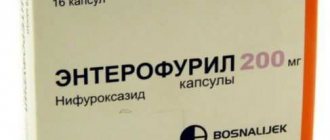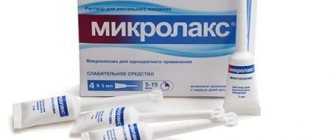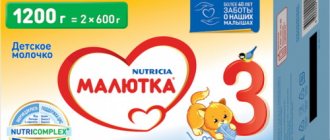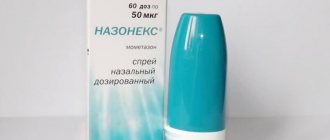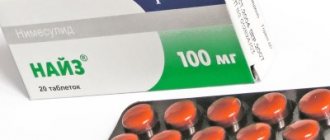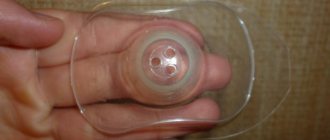Antimicrobial drugs of the penicillin series are characterized by low toxicity and a wide spectrum of influence. They have an antibacterial effect on a large number of both gram-positive and gram-negative bacteria.
The influence of penicillin antimicrobial agents is determined by their ability to provoke the death of pathogenic microflora. Penicillin antibiotics have a bactericidal effect by interacting with bacterial enzymes, disrupting the synthesis of the bacterial wall.
The target for such antimicrobial agents is considered to be proliferating bacterial cells. These drugs are safe for humans, since the membranes of human cells do not have bacterial peptidoglycan.
Antibiotics for children
Antibiotics are medicines used to treat infections in children caused by bacteria, such as sore throat, otitis media, pneumonia (pneumonia).
Widespread and not always justified prescription of antibiotics to children can lead to the development of side effects such as allergies and dysbacteriosis. But the biggest problem with misuse of antimicrobials is resistance (antibiotic resistance), when bacteria change so much that the antibiotics needed to fight the infection no longer have any effect on the child's body.
Therefore, serious reasons are required for prescribing antibiotics to children.
Spectrum of action of penicillins
Natural antimicrobial agents of this group exhibit increased activity against the following bacteria:
- Staphylococcus.
- Streptococcus.
- Pneumococcus.
- Listeria.
- Bacilli.
- Meningococcus.
- Gonococcus.
- Ducray-Unna's wand.
- Clostridia.
- Fusobacteria.
- Actinomycetes.
- Leptospira.
- Borrelia.
- Spirochete pallidum.
The spectrum of influence of semisynthetic penicillin antibiotics is somewhat wider than that of natural ones.
Antimicrobial drugs from this list are classified according to their spectrum of effects as:
- not active against Pseudomonas aeruginosa;
- antipseudomonas drugs.
What Antibiotics DO NOT Do
- Does not affect viruses . Antibiotics kill bacteria or stop their growth, but have no effect on viruses, so they are not used for ARVI, influenza, or bronchitis.
- Does not reduce body temperature . Antibiotics are neither antipyretics nor pain relievers. They fight bacteria that cause inflammation, and not an increase in temperature. The duration of fever is not a determining indication for prescribing an antibiotic;
- Not used for acute intestinal infections - acute intestinal infections with watery diarrhea, regardless of the child’s age (WHO recommendations);
- They do not prevent the development of bacterial complications , therefore they should not be used for acute respiratory viral infections, colds and coughs as a prophylaxis, since their use does not prevent the penetration of microorganisms (bacteria) into the body, an antibiotic is a medicinal drug and does not have anything other than a therapeutic (medicinal) effect. The task of the child’s parents is to detect in time a possible deterioration in the child’s well-being and inform the doctor.
What are antibiotics
In medical reference books, antibiotics are a group of very strong substances that inhibit the development of certain microorganisms or provoke their death.
They can be of natural, synthetic or semi-synthetic origin. A characteristic feature of these drugs is the effect on both pathogenic and beneficial microflora, but at the same time the vital abilities of bacteria are suppressed gradually and in small concentrations. Did you know? Pear is a natural antibiotic. Herbalists recommend these fruits for people with chronic inflammatory processes, as well as for cancer.
Antibiotics have an effect only on a certain type of pathogen, which is determined by the results of a culture test of the patient’s blood or urine. But, despite the effectiveness of these tablets, they should not be considered omnipotent. An incorrectly selected medicine will only harm the body, and even more so a child’s body. Therefore, under no circumstances do you self-medicate or test the entire contents of your first aid kit on your child.
When do children need antibiotics?
In modern pediatrics, it is practiced to prescribe antibiotics for children with a temperature that lasts more than 3 days, as well as in cases of acute forms of severe diseases such as meningococcal infection, viral pneumonia, sinusitis, sinusitis, and otitis media.
Doctors draw the attention of parents to the aggressive effects of such drugs on the digestive tract. By destroying “bad” cells, they have the same effect on “good” bacteria. Therefore, it is strictly forbidden to give your baby antibiotics when he has a runny nose or a sore throat.
If you are taking such medications, you should also take medications to restore your intestinal microflora. It could be “Linex”, “Yogurt”. If your attending physician “forgot” to prescribe such therapy for you, then there is reason to doubt his qualifications
Therefore, it is strictly forbidden to give your baby antibiotics when he has a runny nose or a sore throat. If you are taking such medications, you should also take medications to restore your intestinal microflora. It could be “Linex”, “Yogurt”. If your attending physician “forgot” to prescribe such therapy for you, then there is reason to doubt his qualifications.
In special cases, when the patient has serious complications of the disease, he is prescribed treatment for up to 3 weeks or longer.
Moreover, with frequent use of antibiotics, especially when the medicine was incorrectly selected and used chaotically in the initial stages of the disease, the body begins to show resistance to it. This means that the immune system ceases to resist pathogens and over time becomes practically insensitive to a number of drugs. That is why penicillin, cephalosporin, and fluoroquinol types of antibiotics are justified for children with ARVI only in cases of bacterial flora associated with the infection. Usually these processes begin no earlier than 4 days from the moment of illness.
Children get sick very often, as their immune system is just learning to resist bacterial and viral infections. It is for this reason that every cold, in the first stages of life, can cause serious harm in the form of complications that often do not last a lifetime. Possible complications after ARVI in children can be: rhinitis, tonsillitis, tonsillitis and meningitis.
What Antibiotics DO NOT Do
It should be noted that these medications are not able to cure all ailments, especially in cases where they are caused by toxic substances. In particular, we are talking about botulism, tetanus, various types of fungi and diphtheria. A similar situation arises with regard to influenza, chickenpox, rubella, measles and herpes, which are caused by viruses. This is due to the fact that most antibiotics act only on the simplest microorganisms.
Every parent must know that antibiotics have absolutely no role in treating coughs and allergic reactions. They do not reduce fever and do not promote expectoration, and are also powerless against diseases of fungal origin and, which often cause infectious infections and inflammatory processes in internal organs.
Important! Antibiotics in large dosages are dangerous not only for children, but also for adults. At the same time, if you stop taking medications without permission, or reduce the number of times recommended by your doctor, then pathogenic microorganisms will survive and, having lost sensitivity to the medicine, quickly adapt to it
Antibiotics for ARVI
As a general rule, antibiotics are not prescribed or used for ARVI. Antibiotics for ARVI in children can only be used if there are signs of a bacterial infection. If it is impossible to conduct an examination (blood, urine, smear), there are certain criteria to determine this condition:
- at the age of up to 3 months of the baby’s life, a high temperature (above 38) persists for 3 days;
- if after improvement on days 5-6 there is a deterioration in health - the temperature rises again to 38-39 ° C, the cough intensifies;
- submandibular lymph nodes enlarge;
- cough persists for more than 10-14 days (whooping cough);
- discharge from the nasal passages becomes purulent;
- A white or purulent coating appears on the tonsils (tonsillitis, scarlet fever, diphtheria, infectious mononucleosis).
As a rule, with a viral infection, body temperature returns to normal by 3 days from the onset of symptoms. The cough is sporadic, there is no wheezing in the lungs or hard breathing. Discharge from the nasal passages is transparent and lacks white and green (purulent) inclusions.
Also, antimicrobial drugs can be prescribed by a pediatrician for acute respiratory viral infections and influenza to children with chronic lung pathology, immunodeficiencies, who are at risk of exacerbation of the bacterial process; their choice of antibiotic is usually predetermined in advance by the nature of the flora.
And it is important to remember that only a doctor who is monitoring (pediatrician, ENT) can prescribe an antibacterial agent for a child with ARVI.
Indications
Antibiotics in the form of a suspension can be prescribed to children for various ENT diseases, for intestinal infections caused by bacilli and bacteria, for dental diseases, for inflammation of the genitourinary system, and for rehabilitation after surgery.
For viral infections - influenza, acute respiratory viral infections, acute respiratory infections, scarlet fever, chickenpox, measles, mononucleosis, antibiotics should not be taken!
The question of the need to take antibiotics should be decided by a doctor , especially since since that year antibacterial drugs can no longer be purchased freely; the pharmacist will definitely ask you for a prescription.
Antibiotics for children with cough
There are many causes of cough: viral infections, allergies (cough occurs when the upper respiratory tract is exposed to allergens), bronchial asthma, cough due to nasal congestion when mucus flows into the respiratory tract and many others. But only some types of cough are associated with a bacterial infection and require pediatricians to prescribe an antibiotic, such as whooping cough.
The use of antibiotics for cough is justified and necessary only if the form of microflora that has affected the respiratory tract and caused the cough is precisely known (after receiving tests, for example, a swab from the throat or nose to identify the pathogen with culture for susceptibility to antibiotics).
Therefore, prescribing antibiotics for the treatment of cough is allowed only after additional examinations or empirically immediately after examining the child by a doctor. Empirical therapy is the prescription of antibiotics BEFORE obtaining information about the pathogen and its sensitivity to these drugs. Such therapy is carried out taking into account the most likely pathogens of this infection and their expected sensitivity to available antimicrobial drugs, since the spectrum of pathogens changes with the age of the child, including due to natural immunization, and it is possible with a significant degree of probability to “calculate” possible pathogens and select effective antibiotics. The effect of this treatment is a drop in temperature below 38° within 12 hours and its normalization after 24-36 hours; this effect has diagnostic value in the absence of culture and blood test data.
My child has a severe cough (frequent), can you tell me if I can take antibiotics without a doctor?
** Blue eyed **
It will not be worse! Our doctors now treat patients very disgustingly, so if you think it’s necessary, treat yourself, there’s nothing wrong with that!
Olesya Yashkova
Why give a child antibiotics? The cough won’t go away right away anyway, don’t even think about it, you’ll ruin your child’s immunity in early childhood!
Natalia Kamskaya
Boil milk, throw in onions and carrots. Remove from heat, cover, leave for half an hour or an hour, strain, and give the child something to drink. This remedy gently soothes coughs.
V T
Cough - involuntary forced expiratory movements caused by irritation mainly of the mucous membrane of the respiratory tract (larynx, windpipe, bronchi) and lung tissue - pneumonia, tuberculosis, bronchial asthma. A cough helps clear the airways of foreign bodies, germs, sputum and mucus. Causes of cough: Cough is the main symptom of most lung diseases, but its manifestation does not always mean problems with the lungs. Cough can be caused by: colds, allergies, sometimes emotional stress, anxiety. Manifestations of cough. The cough can be wet and dry depending on the presence of sputum, paroxysmal (with whooping cough), periodic (with bronchitis), continuous and short (with pleurisy), barking (with damage to the larynx and hysteria), hoarse (with inflammation of the vocal cords). Traditional cough treatment How to treat a cough? For acute respiratory infections accompanied by cough, antitussives are needed, but antibiotics are not. In the case of bronchitis with a severe cough and fever, and even more so pneumonia, the opposite is true - first of all, the doctor will prescribe antibiotics and will be absolutely right: eliminating the microbes that cause inflammation is now the main thing. Of course, in parallel with antibiotics, antitussives and expectorants will be prescribed. In general, it is not always necessary to suppress a cough, but only if it is dry, annoying and interferes with sleep. To do this, use the drugs sinekod, glaucine, tusuprex or libexin, which suppress the cough center. Expectorants and sputum thinners (mucolytics) are no less important. They help to achieve the removal of sputum, cleansing of the lungs and self-liquidation of the cough. These can be bromhexine, mucaltin, chalixol, stoptussin-phyto. There are also stronger drugs that dilute viscous sputum and promote expectoration, for example, acetylcysteine preparations (ACC, Fluimucil) or carbocisteine (Mucodin, Mucopront, etc.). Consult a doctor if... * cough does not go away for more than two weeks; * cough accompanied by chest pain; * yellow, green, bloody sputum appears; * temperature stays above 38.5°C.
Karina Kravchenko
so as not to get sick for prevention, we drank a lot, our appetite increased, and I somehow became more cheerful, there are quite a lot of useful vitamins
When do children need antibiotics?
Antibacterial therapy is indicated for severe forms of acute respiratory infections (acute respiratory diseases) in young children due to the impossibility of excluding the participation of bacterial flora in the process. In moderate forms of the disease, treatment with antibiotics is indicated in the presence of chronic foci of infection, with mycoplasma infection, with suspected involvement of bacterial flora in the disease and with the development of complications.
Currently, the absolute indications for the use of antibiotics in children are:
- infections of the upper and lower respiratory tract (acute purulent sinusitis, tonsillitis (acute streptococcal tonsillitis), acute otitis media (AOM) in children of the first and second year of life, pneumonia, diphtheria, scarlet fever).
- urinary tract infection (pyelonephritis, urinary tract infection without established localization (UTI), cystitis).
To confirm or rule out a bacterial infection, so-called markers of bacterial inflammation - leukocytosis and C-reactive protein (CRP) levels in the blood - are usually used.
It has been proven that in a child with ARVI, bacteremia (presence of bacteria in the blood) is most likely indicated by leukocytosis >15×10 9 /l, absolute number of neutrophils >10×10 9 /l and/or band neutrophils >1.5×10 9 / l, while lower numbers occur quite often with viral infections (for example, adenoviral infection). In this case, antibiotics are indicated for the child. When leukocytosis is less than 15x10 9 /l, the indication for antibiotics is an increase in the level of C-reactive protein (above >30 mg/l). The level of CRP in many children with ARVI, bronchitis or laryngitis (croup) is in the range of 15-30 mg/l.
Rules for taking antibiotics in children
- Never ask your doctor to prescribe antibiotics for your child . It is easier for many doctors to follow parents’ lead and prescribe antimicrobial agents to a child without specific indications than to explain to the parent the inappropriateness of such a prescription and risk their reputation.
- Do not use these drugs on your own or without your doctor's knowledge . Parents will not always be able to understand the specific signs of diseases and indications for prescribing antibiotics to their child.
- If the child has already received antibiotics in the previous 2-3 months , then this information must be passed on to the doctor to eliminate the risk of carrying resistant microflora.
- If the doctor prescribed an antibiotic , then ask him to explain why he suspects the baby has a bacterial infection. Ask your doctor for a referral for a blood test, a swab from the throat or nose (if you suspect a sore throat or sinusitis), or a urine test (if you are talking about a kidney or bladder infection), based on the results of which you can determine the “culprit” of the disease and, if necessary, , adjust the prescribed treatment.
- Age restrictions . When choosing antibiotics, it is very important to consider the age of the child. After all, different medications are required to treat a newborn and a three-year-old child, and some antibiotics are prohibited for use at an early age (for example, tetracyclines - used only from 8 years of age).
- Taking antibiotics only by mouth . In pediatrics, the main route of administration of an antimicrobial drug is considered oral, as it is the least traumatic. Preference is given to drugs without sugar and dyes that cause allergic reactions. Soluble granules and dispersible tablets (which dissolve in the mouth) are dosed more accurately.
- Dosage and frequency of administration . Give the drug to the child in the dose recommended by the doctor, without decreasing or increasing it. To measure a single dose, it is unacceptable to use cutlery, since teaspoons or dessert spoons do not always hold 5 or 10 ml. Observe the frequency of administration - give the child as many times as prescribed by the doctor, or as written in the instructions. For penicillins, cephalosporins, macrolides, the recommended daily dose with 2-fold administration creates a concentration in the tissues sufficient to obtain a clinical and bacteriological effect. And antibiotics such as azithromycin are taken only once a day.
- It is important to observe the duration of treatment with the drug , since a decrease in temperature and improvement in the child’s condition are not a sufficient reason to discontinue the antibacterial agent. Quite often, parents stop taking antibiotics on their own after 2-3 days of treatment, as soon as the baby feels better. However, the body cannot cope with the infection on its own, the disease becomes sluggish and can be complicated by damage to the heart, kidneys, etc. In addition, due to premature withdrawal of the antibiotic, new resistant strains of bacteria arise, and in the future its use becomes ineffective. But, on the other hand, if an antibiotic is taken longer than the prescribed time, despite the lack of effect, the risk of complications and adverse reactions increases.
- Do not use antibiotics together with antihistamines due to the lack of evidence of the benefits of their combined use. If a child experiences an allergic reaction while taking an antibiotic, the drug should be stopped and the doctor informed so that he can select another antimicrobial drug.
What medications are prescribed for children?
After prescribing an antibacterial drug, cautious parents may have doubts about whether to give their child antibiotics prescribed by a doctor or not. After all, an inexperienced pediatrician may make a mistake with the name and prescribe a child a medicine for adults.
In this case, vigilant parents should focus on the list of the most popular antibiotics:
- From the first month of life, children are recommended drugs from the penicillin group: amoxicillin, flemoxin solutab, amoxiclav. These treatments are sold in the form of dissolvable tablets or granules for suspension.
- Six-month-old children can take antibiotics from the cephalosporin group: zinnat, suprax, cefuroxime. In addition, from six months the body accepts and assimilates macrolide antibiotics: hemomycin, sumamed, macropen, clarithromycin. The last two drugs are allowed to be taken from birth.
- One-year-old children can be prescribed more serious drugs: azithromycin and ceftriaxone.
Of course, this list of antibiotics for children is far from complete. And if the prescribed drug is not found on this list, then in this case parents should refer to the instructions for the prescribed drug: if the child’s age does not correspond to that stated by the manufacturer, the advisability of prescribing the drug should be discussed with another pediatrician.
The dangers of unjustified prescription of antibiotics
Increasing resistance (resistance) to antibiotics among microbes. Antibiotic resistance occurs when bacteria change to protect themselves from the antibiotic. Resistance is spreading more and more, while the number of effective antibiotics is decreasing. This means that the day may come when there are no antibiotics left to fight infectious diseases.
Disturbance of the normal microflora of the body. Antibiotics, destroying pathogenic microorganisms, suppress the growth and development of normal microflora.
Risk of adverse reactions. Systematic and incorrect use of antibiotics in treatment can lead to allergic reactions, a decrease in the activity of the body's protective functions and other undesirable consequences.
When to give antibiotics to a child with fever?
I have a lady friend who, every time her seven-year-old daughter starts getting sick, rushes to treat her with antibiotics. This mom also has her “favorite” medications, which, in her words, “will definitely help with everything!” The absurdity and frightening scope of the situation is that this mom is not alone in her beliefs. More than 45% of parents, according to a survey conducted by VTsIOM sociologists, are confident that influenza and ARVI can be treated with antibiotics, and also believe that antibiotics reduce high fever in the best possible way.
So, let's figure out where the error lies. When does the doctor advise you to take antibiotic medications for hyperthermia (high temperature).
First you need to clearly understand what “high temperature” means. For some, this is 37.1, and for others, 39 is tolerated as 37. As for children's health, mothers and fathers tend to “exaggerate” the numbers, calling “high” an increase in the temperature of their beloved child up to 38 degrees.
There is a generally accepted standard for hyperthermia:
- Mild fever – 38 -38.5
- Moderate heat - 38.6-39.5
- High fever - 39.5
- Fever, life-threatening, extremely high - 40 and above.
Causes of childhood fever
A high temperature is not a disease, but evidence of the normal functioning of the baby’s immune system. If the temperature has risen, it means that the child’s body is resisting the invasion. Most often, viruses arrive uninvited. Therefore, acute viral diseases are the main reason that the thermometer has crossed about “39” and froze somewhere between “39.5” and “40”. Thus, 90% of cases of high fever are viral infections.
It is not difficult to suspect that a virus is at the root of the problem of a child’s deterioration of well-being; it has a recognizable “handwriting”. A sharp and rapid increase in body temperature to 39 degrees or, conversely, low-grade fever around 37.5, dry cough, runny nose, aching sensation in muscles and joints, severe headache. Moreover, all of the above symptoms occur almost simultaneously, and the condition worsens rapidly.
Antibiotics should not be taken for influenza and acute respiratory viral infections. Firstly, because they will not have any effect on the cause of the disease - the virus, because they were created to fight other forms of life - bacteria. Secondly, attempts to bring down the “viral” temperature with antibacterial medications will backfire - the virus will remain safe and sound, but the friendly bacteria living in the intestines, stomach, and genitourinary system will die.
As a result, dysbiosis, thrush, allergies and who knows what other side effects of antibiotics will be added to the viral disease! In addition, antibiotics suppress the immune system, and a child will need it more than ever in the fight against the influenza virus.
In the next video, Dr. Komarovsky will tell you why you should not take antibiotics for viral infections.
Another cause of high fever in a child is a bacterial infection. Usually it replaces the viral one as a complication. But sometimes it can be independent. It takes some time and some skill to recognize it. You can talk about a bacterial disease if:
- Recently, the child suffered a viral infection, he felt better, but then he got worse again, and the second fever is not inferior to the previous one and does not subside. If new symptoms appear. This is a sure sign of a secondary infection.
- If the temperature is above 38 degrees for more than 3 days in a child under 3 months of age, and in a child under three years of age it is 39 degrees. These are good reasons to start taking antibiotics.
- If the temperature appeared later than the stuffy nose. And a runny nose, in turn, appeared with a sore throat. The consistency and slowness of symptoms is a hallmark of bacterial colds.
At this temperature, against the background of bacterial inflammation, the doctor, of course, will not immediately rush to prescribe antibiotics, with the exception of children under three years of age. For them, prolonged heat can cause dehydration, intoxication and death. For all children over 3 years old, the pediatrician will most likely prescribe antipyretics. If the bacterial infection is severe and dangerous in itself (bacterial sore throat, pneumonia, meningitis, purulent otitis or sinusitis), treatment is hardly possible without antibiotics.
How to treat correctly?
If a child has a viral infection, treatment will in no case be aimed at reducing the temperature. The doctor will prescribe antiviral drugs that are approved for children (Kagocel, Orvirem, Remantadine, Anaferon and others). Sometimes antipyretic and painkillers, such as children's Nurofen, are also appropriate. In addition, symptomatic treatment will be prescribed: for a sore throat - rinses, sprays, for a runny nose - drops or inhalations, for cough - mucolytic drugs. The temperature will drop as soon as the virus responsible for the disease is defeated.
If a child has a bacterial infection, the temperature lasts from 3 to 7 days, and there are obvious symptoms of inflammation, the doctor will recommend antibiotics.
If, within 72 hours after starting to take antibacterial drugs, the child does not get better, the temperature does not decrease, it means that these particular antibiotics do not help him, the bacteria is resistant to the drug, and the drug will need to be replaced with another one.
By the way, body temperature is an indirect indicator of the effectiveness of the antibiotic. If the medicine is chosen correctly, the fever will begin to subside within a day or two after the start of treatment. Although antibiotics themselves are by no means antipyretics. This is a truth that every parent should remember.
The doctor will also prescribe antibiotics for long and protracted cases of certain viral infections, such as rubella. Moreover, the temperature in these cases can persist even while taking antibiotics.
General recommendations
- Do not violate the recipe for preparing the suspension. Dilute the dry substance exclusively with water, not milk, juice or tea.
- Monitor the expiration date of the suspension. Usually it is short - from 5 to 20 days. After this time has elapsed, the medicine cannot be taken.
- Do not violate the schedule for taking the drug, do not interrupt the course of treatment prescribed by the doctor, even if the child’s condition has improved.
- When giving the suspension at a fever, avoid antipyretics. They can create the wrong illusion of the effectiveness of treatment by “bringing down” the fever. With a correctly prescribed antibiotic suspension, the temperature should drop on its own. This will be one of the criteria by which the doctor will evaluate the effectiveness of therapy.
- If you take the suspension for a cold, do not rush to add cough or runny nose medications to your treatment regimen. All additional medications should be prescribed by a doctor, taking into account drug interactions.
- Do not draw conclusions about the ineffectiveness of the antibiotic in the first 48 hours, especially based on reviews of “experienced” mothers from the Internet. To understand whether the medicine is working, you need to wait three days. If relief does not occur, tell your doctor, he will change the prescribed antibiotic to another antimicrobial drug.
Also, a lot of useful and interesting information can be found in the video “When antibiotics are needed” by Dr. Komarovsky.
Antibiotics for children
The most popular children's antibiotics:
Children's antibiotics are usually called antibiotics that are available in forms that are convenient for use by children. After all, it is practically impossible to force a one-year-old baby to drink medicine in tablets at a high temperature. Suspensions are available for children under 5 years of age. You can buy them in the form of powder or granules, and then dilute them with boiled cold water according to the instructions.
Children after the age of five can be given self-dissolving tablets. If the baby cannot swallow it, then such a tablet can be easily dissolved in a small amount of water and given to drink in the form of syrup. Children from 7 years old can be given regular coated tablets, and teenagers from 12 years old can take antibiotics in capsules.
Starting this year, all antibiotics in pharmacies are sold strictly according to prescriptions. This was done for a reason. The fact is that in recent years people have too often used antibacterial drugs for any reason or without it. They were available, did not require a doctor’s prescription, and everyone chose antibiotics for themselves and their children without control. This has caused the emergence of a huge number of new strains of bacteria, which are now resistant to the most popular antibiotics.
Microbes have developed their own defenses. New drugs are released less often than old ones cease to be effective. The need to take away the “universal antibiotic tablet” from the population has become urgent. Now, in order to buy antibiotics, you need to show the pharmacist the doctor’s prescription.
Which form of medication to choose for a child
Antibiotics are available in the format of tablets, capsules, syrups, suspensions, powders for the preparation of oral and parenterally administered solutions. Tablets are prescribed to children over 6 years of age - up to this age there is a risk of swallowing problems, capsules - from 12 years of age (they are larger and more difficult to swallow than tablets). Intravenous and intramuscular solutions are used in infants and in difficult situations when the benefit outweighs the harm.
It is preferable to give children's antibiotics in suspension, syrup and solution. They are convenient to use, act quickly, and have few side effects. To prepare the suspension, add chilled water to the mark in the bottle and shake. The dosage is measured using a measuring syringe or spoon. The syrup has a fruity taste and is enjoyed by children.
Principles of prescribing antibiotics
Antibacterial drugs should only be used for infections caused by bacteria. In a hospital for severe and life-threatening infectious diseases (for example, meningitis - inflammation of the membranes of the brain, pneumonia - pneumonia, etc.), responsibility for the correct choice of medicine lies entirely with the doctor, who is based on observation data of the patient (clinical picture) and the results special research.
For mild infections occurring in “home” (outpatient) conditions, the situation is fundamentally different. The doctor examines the child and prescribes medications, and sometimes this is accompanied by explanations and answers to questions, sometimes not. Often, parents themselves ask the doctor to prescribe an antibiotic. In such situations, it is sometimes psychologically easier for a pediatrician to write a prescription than to risk his reputation and waste time explaining the inappropriateness of such a prescription.
In any case, the doctor must follow two basic principles of antibacterial therapy:
- Rapid prescription of the most effective drugs in cases where their effect has been proven.
- Maximum reduction in the use of antibacterial drugs in all other cases.
Unfortunately, there are no reliable external signs or simple and cheap laboratory methods to distinguish between the viral and bacterial nature of respiratory tract infections. At the same time, it is known that acute rhinitis (runny nose) and acute bronchitis (inflammation of the bronchial mucosa) are almost always caused by viruses, and tonsillitis (inflammation of the tonsils and pharynx), acute otitis (inflammation of the ear) and sinusitis (inflammation of the mucous membrane of the paranasal sinuses) ) in a significant part of cases - bacteria.
It is natural to assume that approaches to antibacterial therapy for individual acute upper respiratory tract infections should be somewhat different.
When is penicillin prescribed?
Antimicrobial agents of this group are used to eliminate:
- Pneumonia (acute inflammation of the lungs, usually of infectious origin, which affects all elements of the organ structure).
- Bronchitis (damage to the respiratory system, in which the bronchi are involved in the inflammatory process).
- Otitis (inflammatory process in different parts of the ear).
- Sore throat (an infectious and allergic process that affects the pharyngeal lymphoid ring).
- Tonsillopharyngitis (acute infection of the pharynx and tonsils).
- Scarlet fever (an acute illness characterized by intoxication of the body, rashes throughout the body, as well as fever and redness of the tongue).
- Cystitis (damage to the bladder).
- Pyelonephritis (nonspecific inflammation with damage to the renal tubular system).
- Gonorrhea (a sexually transmitted disease that causes damage to the mucous membranes of organs).
- Syphilis (chronic damage to the skin, as well as mucous membranes and internal organs).
- Skin infections.
- Osteomyelitis (an infectious disease that affects not only the bone and bone marrow, but the entire body).
- Blennorea of newborns (a disease characterized by purulent conjunctivitis, hyperemia of the eyelids and suppuration from them).
- Bacterial lesions of mucous membranes, connective tissue.
- Leptospirosis (an acute infectious disease caused by bacteria of the genus Leptospira).
- Actinomycosis (a chronic disease from the group of mycoses, which is characterized by the formation of granulomatous foci).
- Meningitis (a disease that is caused by damage to the membranes of the brain and spinal cord).
Runny nose and bronchitis
For acute rhinitis (runny nose) and bronchitis, antibacterial drugs are not indicated. In practice, everything happens differently: after one or two days of fever and cough in a child, parents, as a rule, do not give the child antibacterial drugs. But then they begin to fear that bronchitis will be complicated by pneumonia, and decide to use antibiotics. It is worth noting here that such a complication is possible, but it practically does not depend on previous use of antibacterial drugs. The main signs of the development of pneumonia are deterioration of the condition (further increase in body temperature, increased cough, and the appearance of shortness of breath). In such a situation, you should immediately call a doctor who will decide whether the treatment needs to be adjusted.
If the condition does not worsen, but does not improve significantly, then there is no obvious reason for prescribing antibacterial drugs. However, it is during this period that some parents cannot stand it and begin to give drugs to their children “just in case.”
It should be especially noted that the very popular criterion for prescribing antibacterial drugs for viral infections - maintaining an elevated temperature for 3 days - is absolutely not justified. The natural duration of the febrile period during viral respiratory tract infections in children varies significantly; fluctuations are possible from 3 to 7 days, and sometimes more. Longer persistence of the so-called subfebrile temperature (37.0-37.5 0 C) is not necessarily associated with the development of bacterial complications, but may be a consequence of completely different reasons. In such situations, the use of antibiotics is doomed to fail.
A typical sign of a viral infection is a persistent cough accompanied by an improvement in general condition and normalization of body temperature. It must be remembered that antibacterial drugs are not antitussives. In this situation, parents have ample opportunities to use folk antitussives. Cough is a natural defense mechanism and is the last of all symptoms of the disease to disappear. However, if a child has an intense cough that persists for 3-4 weeks or more, it is necessary to look for its cause.
In acute otitis, the tactics of antibacterial therapy are different, since the probability of the bacterial nature of this disease reaches 40-60%. Taking this into account, until recently, antibacterial drugs were prescribed to all patients.
Contraindications and side effects
Restrictions for use include allergies to penicillin antibiotics. If rashes or skin itching occur during therapy, you must stop taking the medication and consult a doctor.
Allergies can manifest as angioedema and anaphylaxis. The list of adverse reactions for penicillins is small. The main negative phenomenon is the inhibition of beneficial intestinal microflora.
Diarrhea, thrush, and skin rashes are the main negative reactions when using penicillins. The following effects occur less frequently:
- Nausea.
- Vomit.
- Migraine.
- Pseudomembranous colitis.
- Edema.
The use of benzylpenicillins, as well as carbenicillins, can provoke electrolyte imbalance with the development of hyperkalemia or hypernatremia, which increases the likelihood of a heart attack and increased blood pressure.
An extensive list of negative effects of Oxacillin and substitutes:
- The appearance of blood in urine.
- Temperature.
- Vomiting.
- Nausea.
To prevent the occurrence of negative effects, it is important to follow the instructions for use, and also use the drug in the dosage prescribed by the doctor.
Pneumonia
If pneumonia is diagnosed or there is serious suspicion of this pathology, the tactics of antibacterial therapy differ from the two previous cases.
Certain age groups of children are characterized by certain features of the predominant pathogens. Thus, under the age of 5-6 years, according to some researchers, up to 50% of cases of pneumonia can be caused by viruses. At an older age, the likelihood of the viral nature of pneumonia decreases significantly and the role of bacteria (pneumococci) in the development of pneumonia increases. However, in all age groups, pneumococcus is a common causative agent of this disease, which causes a severe course of the disease. That is why pneumonia is an absolute indication for antibiotic therapy .
Facts about antibiotics for colds and flu
If your child is suffering from a bacterial infection, these medications may help. However, in the event of a viral infection, they are powerless. They will not alleviate the condition and certainly will not prevent other children from becoming infected.
A few facts about antibiotics:
Colds and flu are viral diseases. There is no point in treating them with antibiotics;
Upper respiratory illnesses (such as bronchitis) with cough and runny nose are also usually caused by viruses. Sometimes symptoms of bronchitis occur if you inhale cigarette smoke or vapor from a vape. But bacteria is somewhere at the bottom of the list of causes;
Most sinusitis is also a consequence of viral infection. Mucus in the nose and accumulations in the sinuses, even if green, do not necessarily indicate a bacterial nature of the disease;
Some cases of influenza are of a mixed bacterial-viral nature. This is where antibiotics can really help;
Certain types of sinusitis can also be caused by bacteria, but even in this case, the infection goes away on its own after a week;
Most middle ear infections (otitis media) also do not require antibiotic treatment.
So, when exactly do antibiotics help with a child’s cough and runny nose? For example, if the inflammation is caused by a streptococcal infection. Symptoms include redness and swelling of the larynx, difficulty swallowing, and fever. The disease can easily be confused with ARVI or influenza; you will need to take a throat swab, and only then the pediatrician will select a medicine.
What antibiotics should be used to treat children with colds? List and recommendations for use
Colds most often do not require treatment with strong antibiotics , especially in childhood.
On the other hand, such a disease can be caused by pathogenic microorganisms , and in such situations the use of antibiotics in the form of tablets or syrups is justified .
Drugs in this category can have not only therapeutic, but also negative effects on the child’s body.
Therefore, a doctor can prescribe these medications based on diagnostic results and based on the child’s age.
Cold in a child and its symptoms
In both cases, the affected tissues begin to become inflamed and painful sensations appear in the throat area.
assume that your baby has a cold based on the following signs :
- the baby begins to be capricious and show causeless anxiety;
- the patient gets tired faster;
- there is general apathy and lethargy;
- body temperature rises;
- purulent mucous discharge appears from the eyes and nose;
- coughing and sneezing appear;
- it hurts the child to swallow;
- young patients may experience noticeable weight loss;
- lymph nodes enlarge.
Such symptoms can appear in various combinations and be more or less intense .
It is impossible to accurately determine the course of treatment on your own, so the patient must be shown to a pediatrician, who, after examination and diagnostic procedures, will prescribe appropriate therapeutic measures.
Indications for the use of antibiotics for colds in children
Antibiotics are medications that are dangerous to a child’s body if used rashly and and in overdoses.
But even if the cause of the disease is the entry of pathogens into the body, the use of such drugs may also be unjustified.
For example, if the disease develops due to the activity of viral or fungal microorganisms.
Therefore,
antibiotic drugs can be used if there are signs of a cold of bacterial origin.
This form of the disease is characterized by a stable increase in temperature during the first few days to high levels, sore throat, the appearance of purulent plaque on the mucous membranes of the larynx and signs of intoxication of the body (headaches, nausea, diarrhea).
What types of medications can be used?
- Penicillins and protected penicillins. The first group includes the drugs flemoxin solutab, amoxicillin and amosin. These are the least toxic drugs with a wide spectrum of action.
But many pathogenic microorganisms can quickly develop resistance to such drugs.In such cases, an alternative can be protected penicillins, which are not destroyed by the protective mechanisms of bacteria (augmentin, flemoclav, amoxiclav).
- Macrolides . Antibiotics with hypoallergenic properties and a minimum number of side effects. They act slowly, but are highly effective against pathogens such as legionella, mycoplasma, chlamydia, streptococci and staphlococci.
These drugs include clarithromycin and sumamed. - Cephalosporins . In pediatrics, fourth-generation antibiotics of this group are mainly used. They act faster than macrolides, but can cause serious side effects, although in general they are low-toxic.
Among the antibiotics in this group are Suprax, Zinnat and Cephalexin. - Nitrofurans (nifuratel, furazidin, nifuroxazide). The drugs have a wide spectrum of action and high efficiency.
- Fluoroquinolones.The most powerful drugs used in childhood.
Their use is justified when antibiotics of other groups are ineffective or bacteria develop resistance to them.Fluoroquinolones include levofloxacin, moxifloxacin and drugs based on these antibiotics.
Popular means
- Amoxicillin.A drug from the category of penicillins of semi-synthetic origin.
Has a wide spectrum of action, can be used from the age of two, which determines the form of the drug.So, starting from the age of 12, you can give a child up to three amoxicillin tablets per day, depending on the symptoms. This is explained by the fact that this drug can be used to treat various infectious viral diseases, including influenza.
For young children, the dosage is calculated based on age, and the drug is given in the form of a suspension. Children under two years of age are given the drug based on a dosage of 20 milligrams per kilogram of the drug, from 2 to 5 years and from 5 to 10 years - 125 and 250 milligrams of the drug per day respectively.
From 10 to 12 years, depending on the symptoms, give from half to one tablet per day.
- Flemoxin solutab . Another semi-synthetic penicillin, which is prescribed for severe forms of infectious colds , including influenza. It is recommended that children be given tablets containing 125 milligrams of the active substance.
From one to three years the dosage is three tablets per day, from three to 10 years - three tablets twice a day, starting from 10 years - 3-4 tablets three times a day. - Azithromycin. The macrolide antibiotic, which is also used for colds and flu, is often prescribed for diseases with an atypical or complicated course . Given the high toxicity of the drug, treatment with such a drug for more than one week is not practiced. Tablets are prescribed to children only from 12 years of age (or earlier, if weight child – more than 45 kilograms).
The dosage is 1 tablet per day, and often a three-day course is enough to completely eliminate pathogenic microflora. - Suprax . The drug is suitable in cases of resistance to penicillins in pathogenic flora. Children from six months to 11 years are prescribed the drug in the form of a suspension.
The dosage for children up to six months is up to 4 milliliters per day, then 2 to 4 years old - 5 milliliters, up to 10 years old - 10 milliliters. - Amoxiclav . Indicated for many diseases of the respiratory tract of infectious origin . Children are prescribed in the form of syrup starting from the age of three months (in such cases, up to one year, the drug is given three times a day, half a teaspoon). Up to seven years, the dosage is a teaspoon three times a day, in aged 7-14 years, the dosage is doubled.
From the age of 14 you can switch from suspension to tablets (three tablets per day at regular intervals). - Sumamed Forte . A medicine based on azithromycin, which not only eliminates pathogenic microorganisms, but also prevents the development of new ones.
Depending on the child’s body weight, the dosage of the drug per day is 2.5 milliliters (10-14 kilograms), 5 milliliters (15-24 kilograms), 7.5 milliliters (25-34 kilograms), 10 milliliters (35-44 kilograms) and 12.5 milliliters for children weighing 45 kilograms and above. - Ofloxacin. A fluoroquinolone antibiotic, which is used mainly in the development of strains of pathogens that have developed resistance to drugs of other groups . The average dosage is 7.5 milligrams of the drug per kilogram of weight.
Taking into account that one tablet contains 200 or 400 milligrams of antibiotic, depending on the form of release. - Cefotaxime. A cephalosporin antibiotic that used in the most severe cases and administered intramuscularly and intravenously.Therefore, this remedy is not very relevant for home treatment.
Children weighing less than 50 kilograms in a hospital setting are administered from 50 to 180 milligrams of the drug per kilogram of weight at a time.The number of injections can be from 2 to 6 times a day.
For larger weights, the dosage is calculated individually.
The dangers of taking antibiotics
It is not uncommon for children to be admitted to the emergency room due to side effects from antibiotics. The effect of such medications is akin to carpet bombing - all targets along the way are destroyed, that is, literally the entire intestinal microflora, both good and bad.
Hence the main danger of antibiotics for the baby’s immunity, which is expressed in the form of severe diarrhea, vomiting and dehydration. The younger the child, the more significant the consequences can be.
Antibiotics are dangerous by reducing natural defenses and, in the long term, causing gastrointestinal diseases and autoimmune diseases.
In addition, approximately 5 out of 100 children experience allergic reactions to the components of the drug. Some of them (anaphylactic shock) pose a direct threat to life.
Finally, another danger of uncontrolled use of antibiotics is resistance (immunity to the drug). When you really need them, they won't work.
In addition, antibiotics have a certain expiration date. Why keep unnecessary medicine in your medicine cabinet? This is money down the drain.
Antibiotics for newborns
The younger the child, the more thorough the indications for the use of antibacterial drugs should be. You cannot give antibiotics to children under one year from the first days of illness; the body itself must fight bacteria. If after 3-5 days of illness the symptoms persist or worsen, antibacterial agents are prescribed.
Exceptions are pneumonia and purulent tonsillitis. It is not advisable for newborns to be given aminoglycosides in the form of injections (Kanamycin, Gentamicin). They can cause complications on the kidneys and hearing. Injections of tetracyclines (Doxycycline, Minocycline) are also prohibited due to the negative effect on cartilage and bone tissue.
For children of any age, treatment with Levomycetin (leads to anemia) and fluoroquinolones (impairs the development of joints) is prohibited. In infancy, inexpensive general-purpose drugs are given in the form of a suspension or syrup. Gentle means are suitable for treatment:
- Tsiprolet;
- Amoxicillin;
- Ampicillin;
- Augmentin;
- Cefuroxime;
- Zinatsef.
